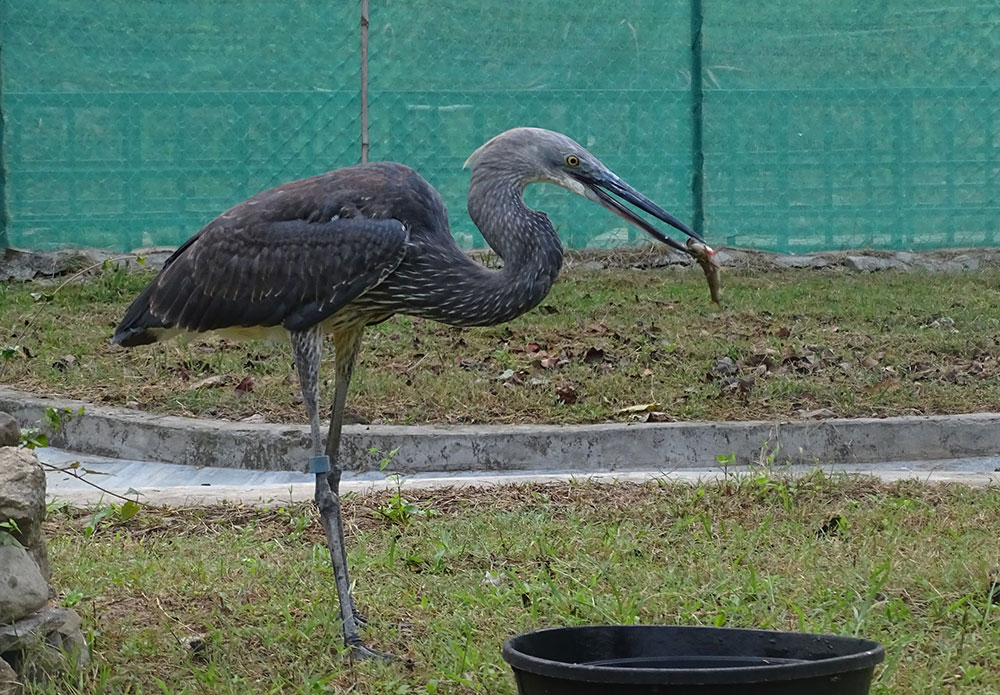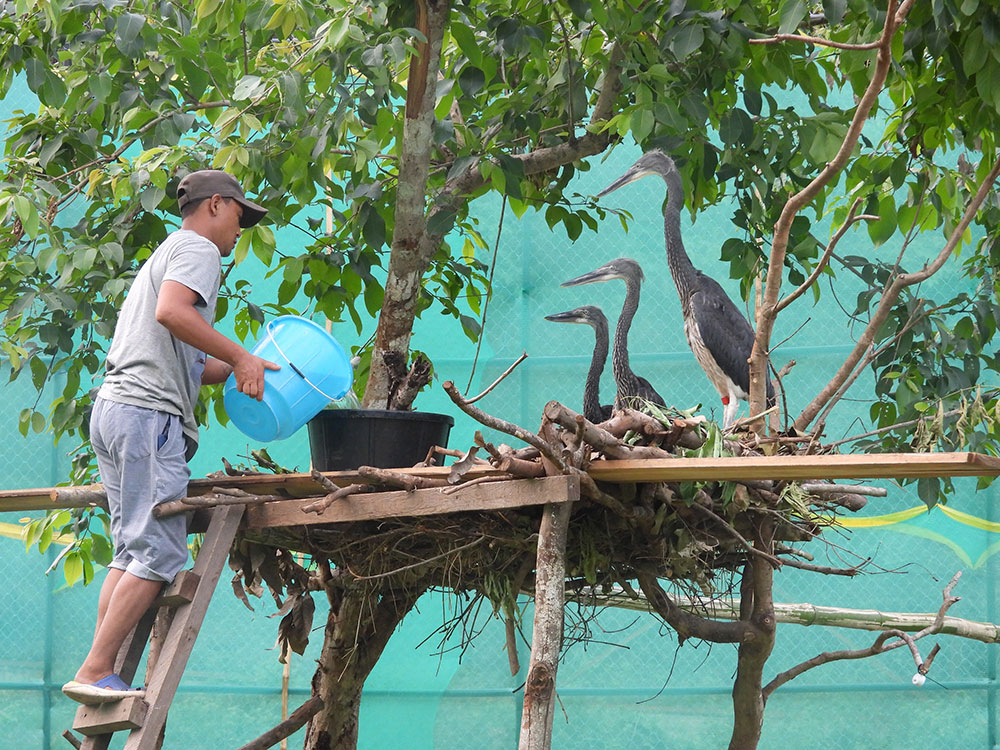By Yangyel Lhaden
TSIRANG: A few kilometres before the Tsirang-Dagana Junction, amidst the stunning sceneries of Chachey Dovan in Tsirang, lies a hidden gem of conservation: RSPN’s White Bellied Heron (WBH) Conservation Centre. This sanctuary, perched atop a hill, provides important refuge for the severely endangered WBH, a species on the verge of extinction with less than 60 individuals living globally.
Surrounded by verdant valleys on all sides and distanced from human settlements, the WBH Conservation Centre offers an ideal habitat for the survival of this bird. The WBH thrives in this calm haven because the habitat at the centre mimics its natural surroundings. Recognising the WBH’s sensitivity to human disturbances and the obstacles it experiences in the wild, the centre plays a critical role in guaranteeing the bird’s survival.
Bhutan has achieved an astounding total of 27 WBH this year, accounting for more than half of the global population. The scale of this accomplishment emphasises the importance of the WBH Centre’s work. According to Japanese experts, if left to its own devices in the wild, the WBH will become extinct by 2050. As a result, the WBH Centre’s intervention becomes critical in preserving this endangered species.


The major goal of the centre is to protect the ex-situ breeding gene pool, which is created by rearing birds outside of their natural habitat before returning them into the wild. In addition, the centre serves as a research hub, a global information repository, and an educational institution dedicated to increasing public knowledge of the WBH.
Visitors to the centre can explore two aviaries that host three WBH for observation and conservation. The aviaries, which have a circular top and bottom connected by vertical wires, are surrounded on all sides by green netting. Inside, a pond resembling a meandering river are filled with fingerlings and is surrounded by trees. The heron’s replicated natural surroundings is completed by an artificial nest.
Sonam Tshering, a senior research assistant, points to a yellow-tagged WBH, and tells the story of its rescue. “We rescued him from the Phibsoo Wildlife Sanctuary last year, where he had become entangled in a fishing net.” The yellow-tagged WBH is currently partnered with a red-tagged female, while a blue-tagged WBH lives in a separate aviary. Sonam Tshering says that separating the siblings prevents inbreeding and hence mitigates potential genetic issues.
Sonam Tshering goes on to describe the WBH’s distinguishing characteristics, mentioning the yellow-tagged juvenile’s reddish belly with a scaly body and shorter crest. “The female with the red tag is a sub-adult,” Sonam Tshering explains, “As evidenced by her white belly, greyish body, and longer crest.” Sonam Tshering highlights the female’s attempts at courtship this season, despite the male’s current juvenile phase, as she anticipates the male WBH’s transition to the sub-adult stage next year.
Indra Acharja, chief of the species conservation division, emphasises the hands-on experience officials get at the centre, ensuring their readiness to meet the high breeding targets. Aside from breeding, the institute provides a vital platform for educating and advocating for WBH conservation.
To this end, the exhibition hall at the centre, inaugurated in April of this year, serves as a focal point for public engagement. To date, approximately 900 visitors have marvelled at the wealth of knowledge showcased within its walls. Informative boards emphasise the urgency of saving the white-bellied heron, detailing its life cycle and global status. An infographic proudly illustrates the first successful captive breeding achieved in 2011. Additionally, the hall features display of preserved body parts, a meticulously crafted model of the bird, and a bird’s skeleton encased in a glass box.
The reception section of the exhibition hall features a television screen that displays videos collected by CCTV cameras, allowing insights into many parts of the WBH’s existence in the wild. From fascinating mating rituals to descriptions of their wild behaviours, these short video clips provide a rare glimpse into the intriguing world of these magnificent birds and the dedicated conservation efforts.
While the WBH Centre struggles with sporadic internet connectivity and unstable power supplies, its placement along this route entices visitors. But a visit to the WBH Centre promises to broaden one’s understanding and admiration of the WBH, a species whose existence is in the hands of a caring few.


